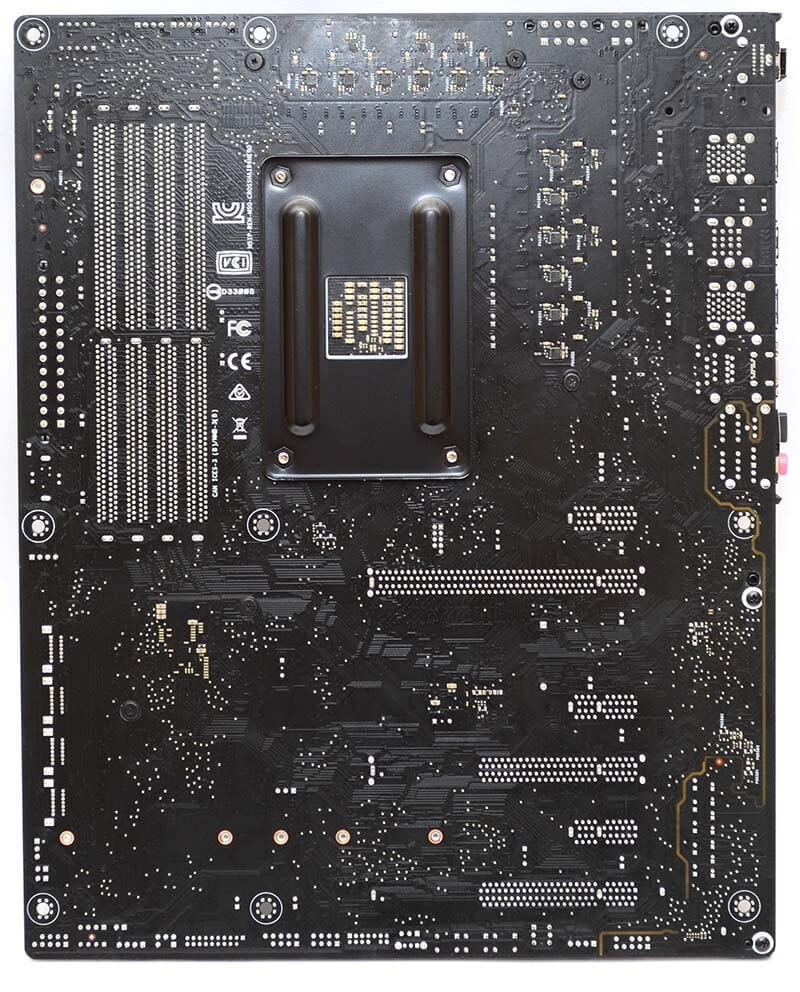ASUS RoG Crosshair VI Hero X370 Motherboard Review
Peter Donnell / 8 years ago
A Closer Look
The ASUS RoG Crosshair VI Hero X370 is a high-end board that is packed with features, and that’s easy to see with a quick overview, as the board has barely any areas that are not packed with hardware. The overall board design is staggering, it blends the patterned effect on the PCB, with the aggressive angular design of the VRM cooler and rear I/O backplate, and it’s sure to look pretty impressive once mounted in your chassis.
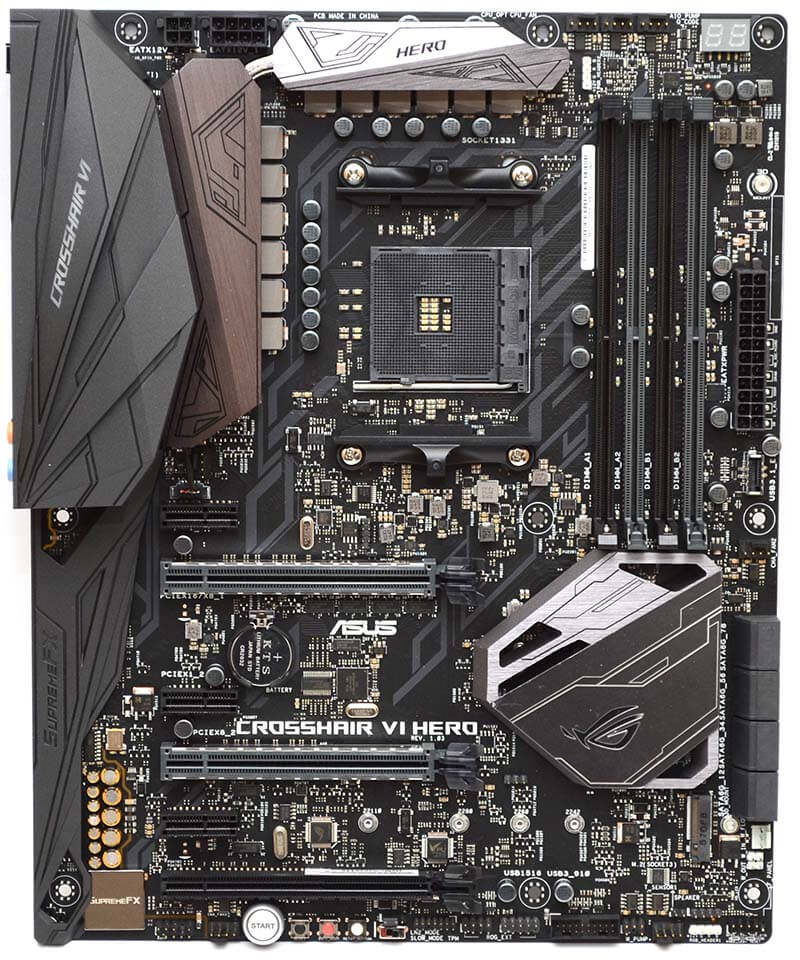
The first feature that’s new here is that lovely AMD AM4 socket, which adds support for the latest and many future chips from AMD, including Ryzen. It comes with the stock cooler clip mount pre-attached, but it can easily be unscrewed for coolers that mount directly to the board/backplate; this motherboard is designed to support any AM3/AM4 cooler mount!
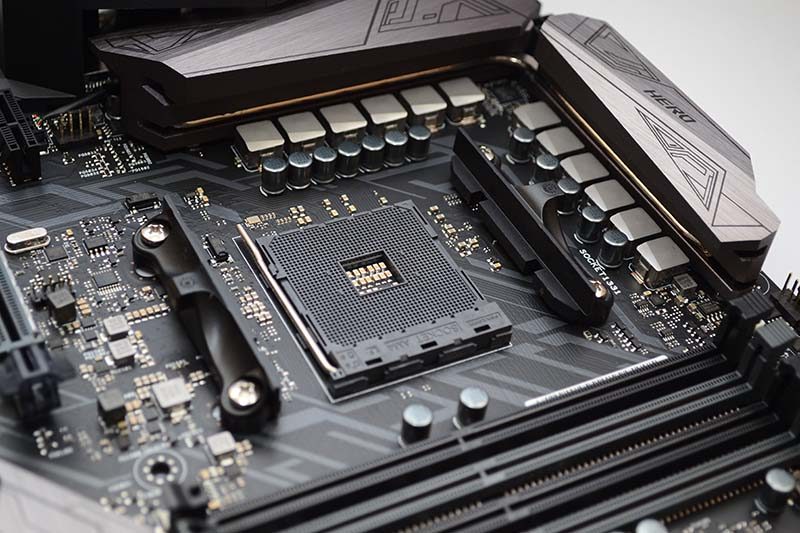
Surrounding the socket, you’ll find a rack of NexFET MOSFETs, MicroFine alloy chokes, Digi# PWM controller, and 10K black metallic capacitors, which are set to deliver even better voltage regulation and stability over previous generations, which should hopefully give us extra headroom getting high-end overclocks.

There are four DDR4 (dual channel) slots on this board, with support for up to 3200MHz (and beyond with overclocking).
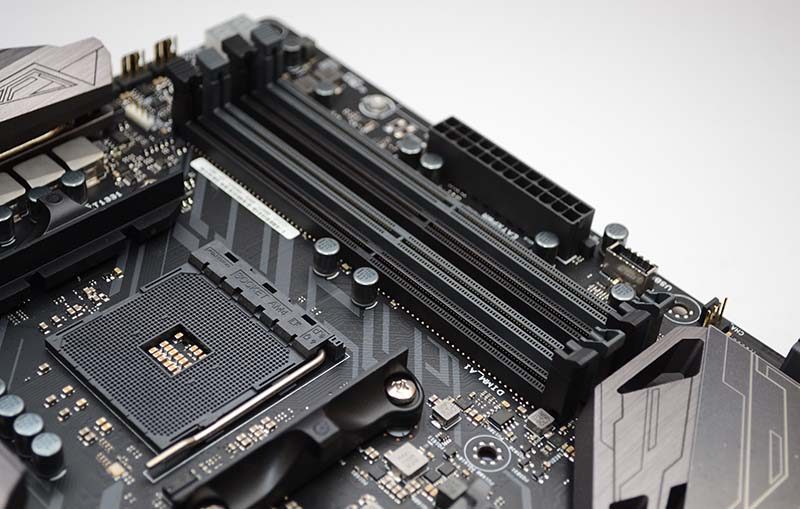
Tucked under this lovely cooler/guard, you’ll find the AMD X370 chipset, which offers the full range of features that are currently available to the Ryzen processor, including overclocking, M.2 and much more. Of course, this wouldn’t be a modern gaming board without RGB lighting, and you’ll find ASUS AURA SYNC built into the, with lights on the rear I/O shield and this cover, giving you lots of cool effects to play around with, as well as RGB headers to hook up even more lights in your system.
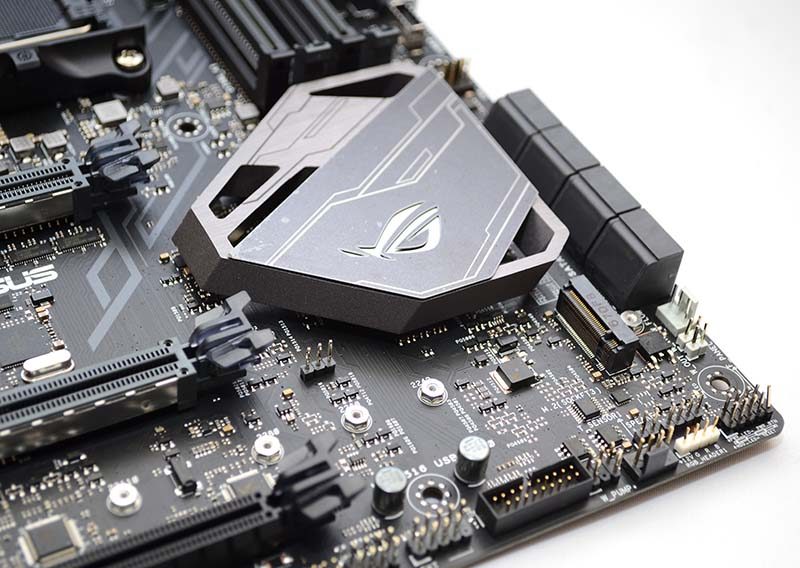
On the bottom row, you’ll find a couple of the 4-pin controllable fan headers, and there are five of those in total. There’s also a W_Flow and W-in/out, which is fantastic for anyone wanting to keep control of their water cooling setup. Of course, you’ll also find the usual bank of USB and audio headers, the BIOS switch, and master power controls right on the board too, which is perfect for bug fixing and overclocking.
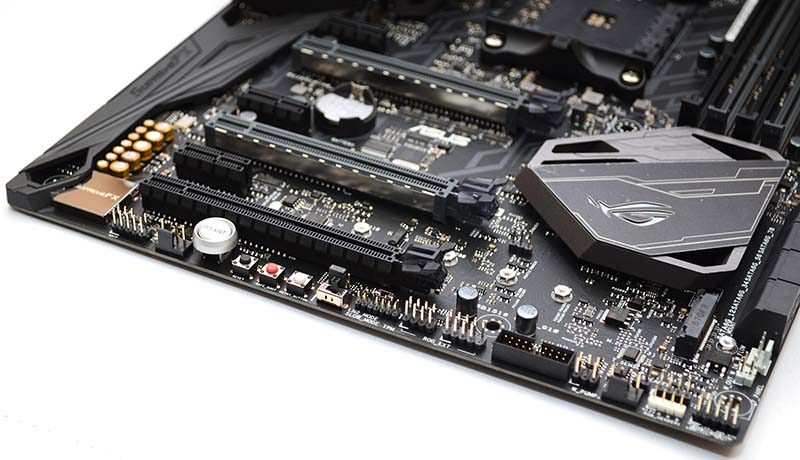
Audio enthusiasts will be pleased to see that sound has been giving lots of love too. The board features 10 DAC channels, with Nichicon Capacitors, offering up an impressive 113dB signal-to-noise ratio line-in and 120dB line-out. You’ll find all this runs through the SupremeFX S1220 codec, an ESS® Sabre Hi-Fi ES9023P digital-to-analog converter, and a Texas Instruments® RC4580 op-amp.
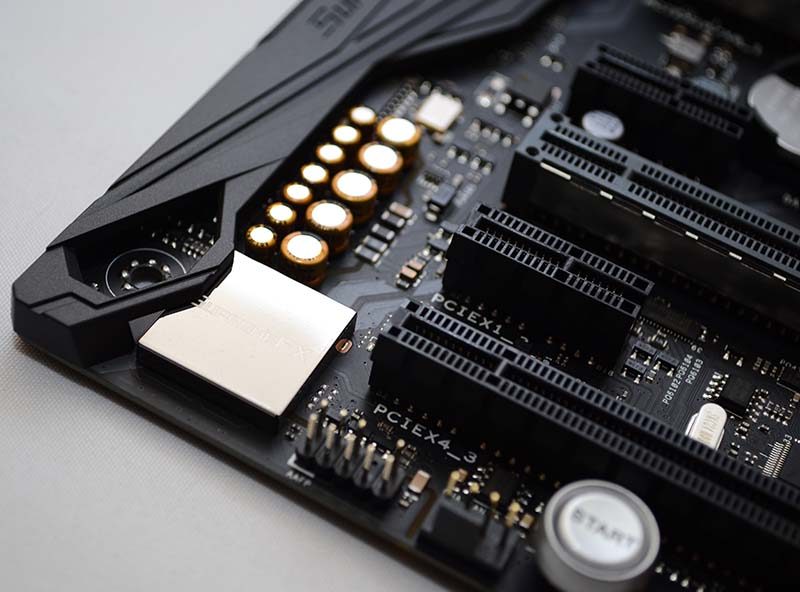
Multiple graphics cards are no issue for a board this size, and you’ll find that lovely PCIe with SafeSlots reinforcement.
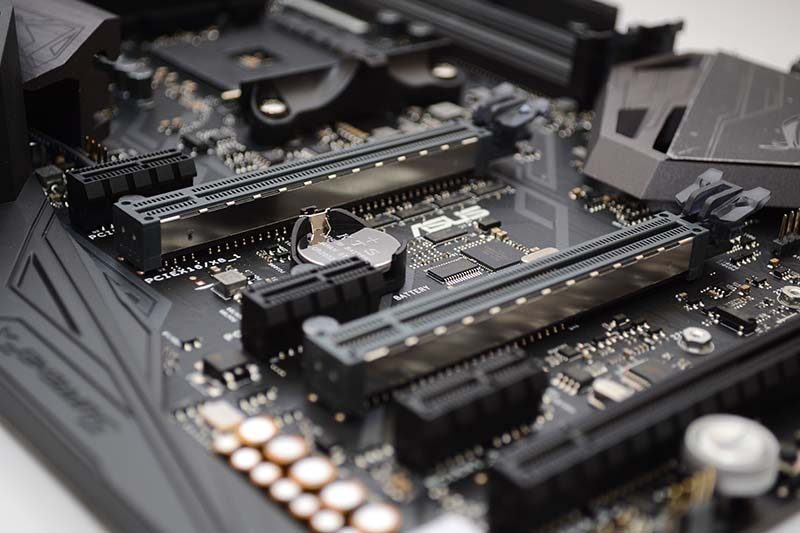
Up top, three more of the fan connectors, as well as a handy status LED block, which is great for keeping track of any issues with your system.
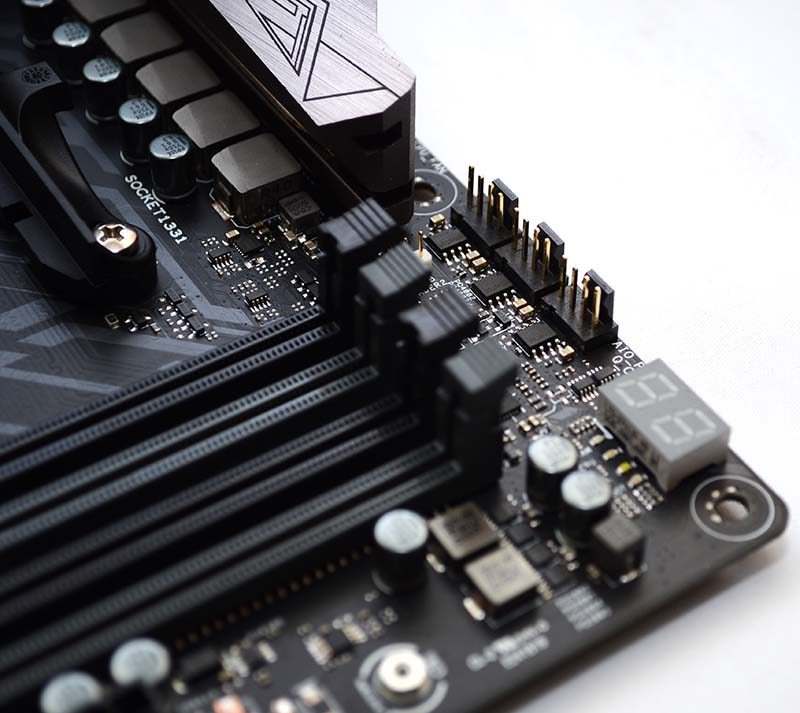
That rear I/O guard is hiding 8 x USB 3.0 ports, and 4 x USB 3.0 ports, as well as a USB 3.1 Type A and Type C port, so connectivity really shouldn’t be an issue here! There’s also an easily accessible BIOS and system reset button should you need them. There’s also an M.2 )E-key), which is perfect for an add-in Wi-Fi card.
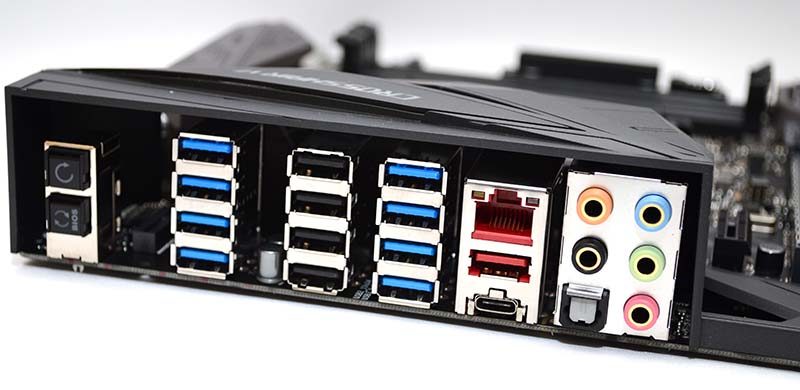
The CPU takes its power from an 8-pin and a 4-pin connector, which should give us all the extra power we need to push some decent overclocks from the processor.
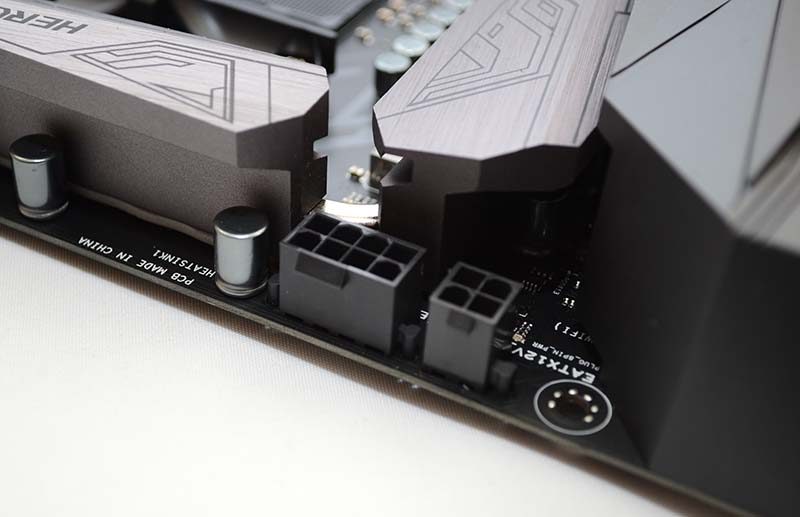
Storage support is very good on this board, with 8 x SATA 6G ports, and behind that an M.2 Socket 3 Type M port, which delivers 1 x 2242~22110 (PCIe 3.0 x 4 + SATA) connectivity.
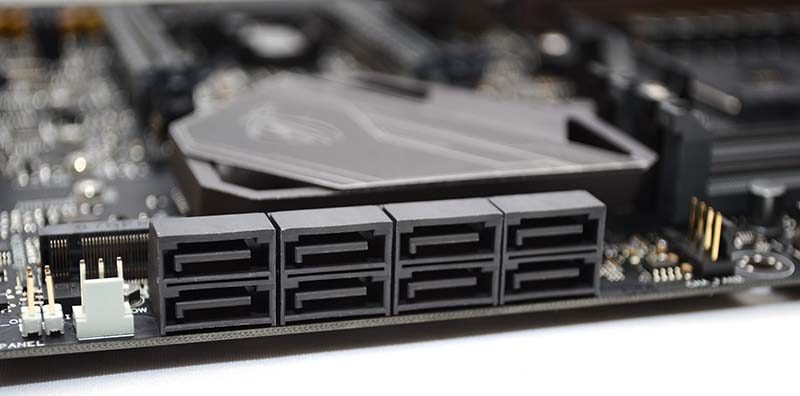
Here we have the 24-pin power connector, and just to the left of that, there’s a USB 3.1 front panel connector too.
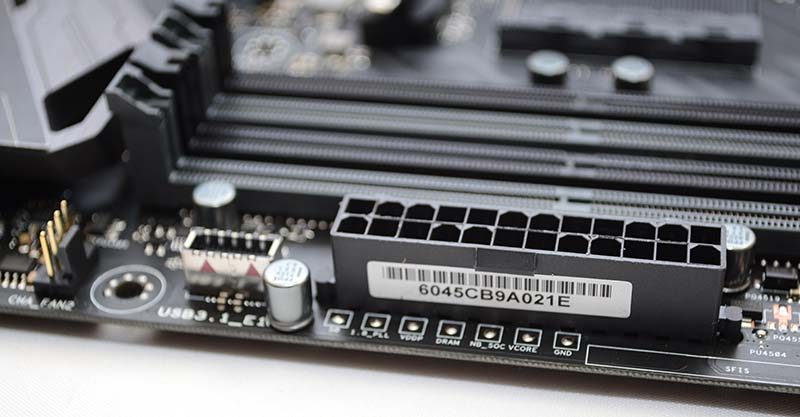
Finally, on the back of the board, you’ll find the CPU cooler backplate (removable), as well as the motherboard trace that separates the audio components from the mainboard. Now, let’s get this setup and see what it can do!
